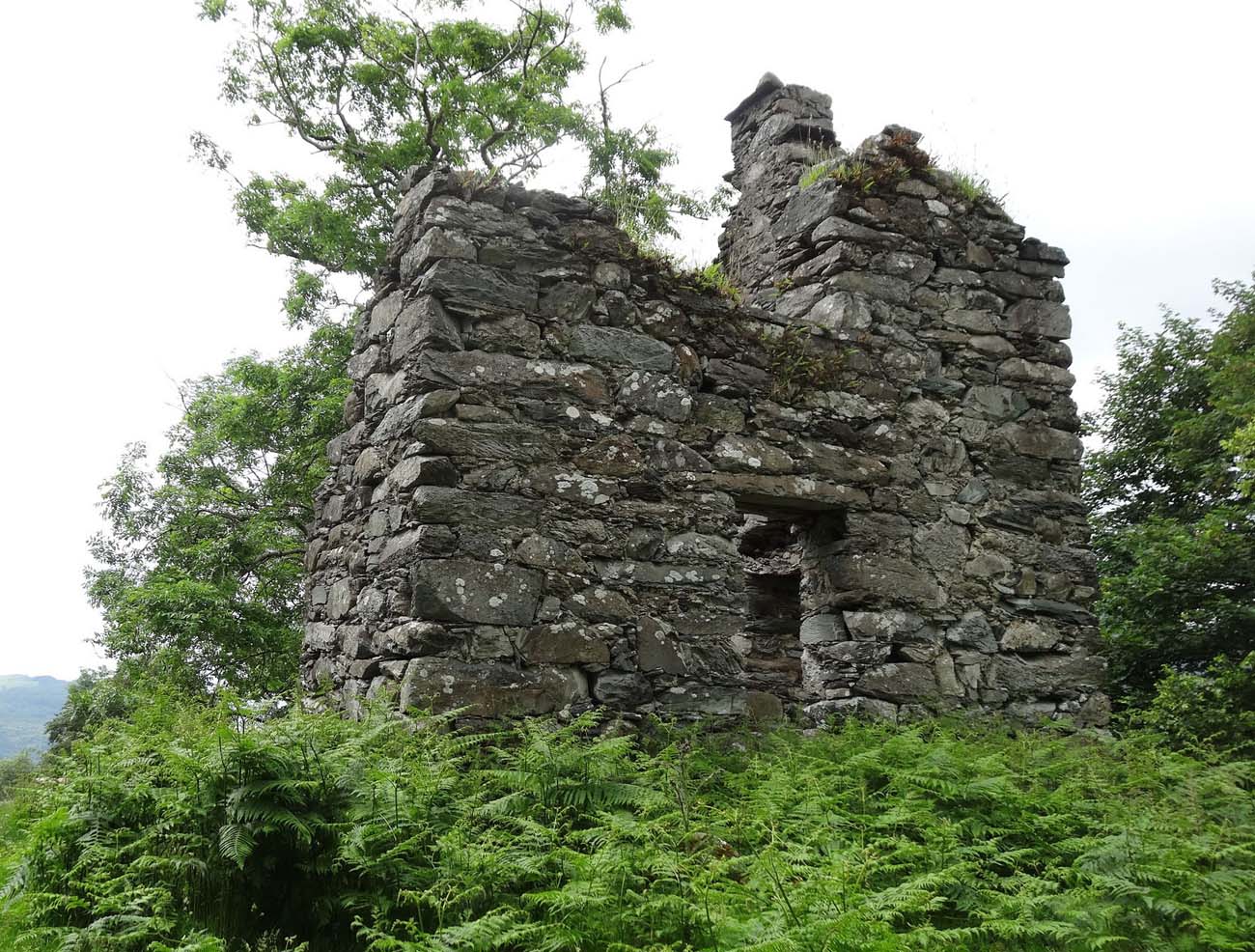History
The earliest record of the Welsh castle Cymer dates from 1116 and is also the oldest mention of a native Welsh castle that can be identified today. It was then supposed to be erected by Uchdrd ap Edwin, who got the surrounding lands from Prince of Powys, Cadwgan ap Bleddyn. When the prince died in 1116, Uchdryd erected the castle without permission, but in the same year Cadwgan’s successors sent army to Cymer, run the founder of the castle away and burnt its building. After this event, the castle was most likely never rebuilt, and only in the 16th century a stone residential building was erected on the top of the mound.
Architecture
The castle was probably built of wood on a semicircular earth mound with a diameter of about 13 meters and today’s height of up to 4.5 meters. There are no traces of the moat or a defensive ditch, but the whole thing was on a natural outcrop of the area about 46 x 40 meters. On the mound, a building measuring 6.7 by 7.5 meters was later erected with walls about 1 meter thick, placed above the basement with massive foundations. Above it, the building had at least two more storeys. There was a fireplace in the south-west corner, and a staircase on the opposite side. The building could have been a 16th century watchtower or a hunting lodge of the abbots of Cymer.
Current state
The early medieval castle has not survived to modern times. While its location has been correctly established (which is not certain), today you can only see a mound and relics of a later building from the 16th century, in the form of two stone walls, nowadays up to about 4 meters high. Admission to the mound is free, although it is located on a private property. Other possible locations for a medieval castle are Garthmaelan-bach in close proximity, further downhill, where there are ramparts relics near the farm, and the Pentre Farm at the edge of the valley at the confluence of two rivers. There is an earthen mound at Pentre Farm, which in the course of research conducted in 1871 turned out to be a prehistoric burial mound, but perhaps used by medieval builders.
bibliography:
Davis P.R., Castles of the Welsh Princes, Talybont 2011.
Davis P.R., Towers of Defiance. The Castles & Fortifications of the Princes of Wales, Talybont 2021.
The Royal Commission on The Ancient and Historical Monuments and Constructions in Wales and Monmouthshire. An Inventory of the Ancient Monuments in Wales and Monmouthshire. County of Merioneth, London 1921.

